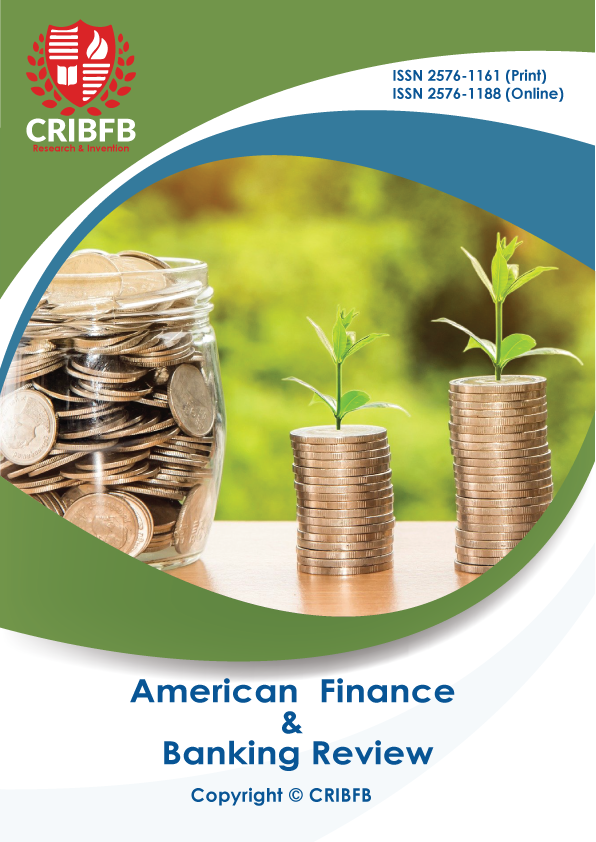CUSTOMERS’ ASSESSMENT ON E- BANKING SERVICE QUALITY IN BANGLADESH: CHALLENGES AND STRATEGIES
Main Article Content
Abstract
This paper attempts to investigate to understand customers’ evaluation regarding service quality of e-banking in Bangladesh. It also examines the major challenges and required strategies for promoting e-banking. To conduct the study, a total number of 205 respondents were taken as sample from Chittagong region by using simple judgmental sampling technique. A face-to-face interview method was followed by using a structured questionnaire to collect the data. Five points Likert scale was used to examine the customers’ evaluation on the service quality and through statistical measures it analyze the problem. Garret’s ranking technique was applied to rank the qualitative data for analyzing challenges and required strategies of e-banking. The study reveals that from the customers’ assessment, e-banking saves time and hazard, facilitates quick and easier access to information, speedy transaction, receiving service easily, ensures accuracy, effectiveness and security, provides versatile service, anytime, anywhere banking facility. The study also found that technological disturbance, insufficient infrastructure, unavailability of service in rural areas, high service charge are the major challenges of e-banking service in Bangladesh. The customers suggests to develop infrastructure, upgrade technology, increase security measure, enhance promotion for developing customers’ awareness, introduce innovative initiative of Bangladesh bank, extend service across the country etc.
JEL Classification Codes: G21, L15.
Downloads
Article Details
Section
How to Cite
References
Akber, S. M., & Dey, A. (2020). Evaluation of the financial performance between traditional private commercial banks and Islamic banks in Bangladesh. International Journal of Islamic Banking and Finance Research, 4(2), 1-10.
Ahmed, S.M.S., Rayhan,S.J., Islam, M.A., & Mahjabin, S. (2012). Problems and prospects of mobile banking in Bangladesh. Journal of Arts, science & commerce, 3(1), 47-58.
Al-Amin, S., & Rahman, S. S. (2010). Application of electronic banking in Bangladesh. Bangladesh Research Publications Journal, 4(2), 172–184.
Alam, S., Khatibi, A., Santhapparaj, A. S., & Talha, M. (2007). Development and prospects of internet banking in Bangladesh: Competitiveness review. An International Business Journal, 17(1/2), 56–66.
Baten, M. A., & Kamil, A. A. (2010). E-banking of economical prospects in Bangladesh, Journal of Internet Banking and Commerce, 15(2), 1–10.
Bruene, J. (2002). Online banking by the numbers. Retrieved from www.onlinebankingreport.com
Burr, W. (1996). Wie informations technik die bank organisation verandern konnte, Bank mark, 11, 28-31.
Daniel, E. (1999). Provision of electronic banking in the UK and the Republic of Ireland. International Journal of Bank Marketing, 17(2), 25-34.
Halperin, K. (2001). Balancing Act, Company business and marketing, February.
Howcroft, B., Hamilton, R., & Hewer, P. (2002). Consumer attitude and the usage and adoption of home based banking in the United Kingdom. Journal of Bank Marketing, 20(3), 111 –121.
Huda, F., & Chowdhury, T.A. (2017). Prospect of e-banking in Bangladesh: New way to make banking electronic, Asian Economic and Financial Review, 7(9), 509-518.
Khanam, Z., & Alam, M.Z. (2018). Factors affecting the adoption of internet banking: A study on Dhaka city, Bangladesh. International Journal of Business and Innovation, 4(1), 01-13
Liao, Z., & Cheung, M.T. (2002). Internet-based e-banking and consumer attitudes: An empirical study. Information & Management, 39, 283-295.
Masukujjaman, M., Siwar, C., Mahmud, M. R., & Alam, S. S. (2016). Banker’s perception of green banking: Learning from the experience of Islamic banks in Bangladesh. Malaysian Journal of Society and Space, 12(2), 144-153.
Mattila, A., & Mattila, M. (2005). How perceived security appears in the commercialization of internet banking. Int. J. Financial Services Management, 3(1), 23-34.
Mia, H., Rahman, M.A., & Debnath, N. C. (2007).Consumer behavior of online banking in Bangladesh. Journal of Business Studies, 27(2), 151-181
Nasri, W. (2011). Factors influencing the adoption of internet banking in Tunisia. International Journal of Business and Management, 6(8), 143-160.
Nelubiri, O.N., & Sinti, Q. (2006). Consumer’s attitudes, systems characteristics and internet banking adoption in Malaysia. Management Research, 29(2), 16-27.
Sadekin, M.S., & Shaikh, M.A.H. (2016). Effect of e-banking on banking sector of Bangladesh. International Journal of Economics, Finance and Management Sciences, 4(3), 93-97.
Sadekin, M.S., Mukta, S.N., & Shaikh, M.A.H. (2019). Customers’ trust on e-banking system in Bangladesh. International Journal of Economics, Finance and Management Sciences, 7(6), 178-186
Simpson, J. (2002). The impact of the internet in banking, observations and evidence from developed and emerging markets. Telematics and Informatics Journal, 19(4), 315-30.
Rahman. (2008). Innovative technology and bank profitability: The Bangladesh experience. Working paper series 0803, Bangladesh Bank, Retrieved from https://www.bb.org.bd/fnansys/bankfi.php, on December 15, 2008
Uddin, M.B., Haque, A., Rahman, M.M., & Mamun, A.A.A. (2016). Electronic banking products and service of private commercial banks in Bangladesh: Present status and challenges. International Journal of Business and Management Review, 4(8), 44-55.




